Propagation:
‘Multiplication of plants is termed as propagation’.
Types of Propagation
A) Sexual Propagation
Sexual propagation refers to the multiplication of plants by seeds. In sexual reproduction, there is a fusion of male and female gametes, as a result of which the seed is produced. The seed plant can be different from the parent plant and the seeds are formed by meiosis.
Watch Lecture Video
Advantages of Sexual Propagation
- Propagation from seed is easy.
- Sexual propagation plays an important role in creating diversity in plants. And diversity sometimes gives higher-yielding plants called chance seedling.
- Seed-grown plants are long-living, more tolerant to the soil, climate, and diseases.
- In some plants, the new plants cannot be prepared with asexual propagation, in that case, plants are raised from seeds only.
- Polyembryony is found in some fruit trees such as citrus, mangoes, and Jamun. Plants in such seeds are produced from integument tissue and nucellar cells of the embryo. This type of plant is free from fertilization and has the same parental qualities.
- Apomixis is found in some plant species, such as in some species of apple, (Malus sikymensis, M. apensis, M. sergenti), causing plant-borne from seeds similar in quality to ancestors.
Apomixis: – Development of the fetus through asexual reproduction.
- For asexual propagation methods, the rootstock is prepared from the seed itself.
Disadvantages of Sexual Propagation
- Most of the plants grown from seed do not have the same ancestral or parental qualities.
- The juvenile phase of seeded plants is very long, so flowering and fruiting are very late.
- Seeded plants are tall and tangled in shape, so there is difficulty in cultural and other horticultural activities.
- Seeded plant’s quality of fruits and yield is low.
- Some diseases like Psorosis in citrus and some viruses in peaches and litchi are carried by seeds so healthy plants cannot be obtained.
B) Asexual Propagation
Asexual propagation uses asexual reproduction in which mitotic division occurs. Mitosis occurs at the shoot tip, root tip, and cambium. In mitosis, chromosomes divide and form two daughter cells, and this division is the basis of asexual reproduction.
Advantages of Asexual Propagation
- Plants propagated by vegetative methods are similar in parental qualities.
- Juvenile phase plants propagated by vegetative methods are short and flowering and fruiting is quick.
- Plants propagated by vegetative methods are of small size. Through which the cultural operations and harvesting can be done easily.
- In some plants in which seed is not produced, it can be propagated only by asexual methods. Example pineapple, rose, etc.
- Noble plants can be prepared by vegetative methods such as two-three coloured flowers in a rose.
- the benefit of the rootstock and scion can be availed only through vegetative methods.
- A tree can be repaired only by a vegetative method such as bridge grafting.
- An unproductive native variety can be converted into a productive variety by the vegetative method.
Disadvantages of Asexual Propagation
- Plants prepared by the asexual method are short in age.
- A variety of plants cannot be produced by the asexual method.
- Some diseases spread from the bark of scion; hence the vegetative method causes their movement. Such as the lemon Tristeza virus (quick decline).
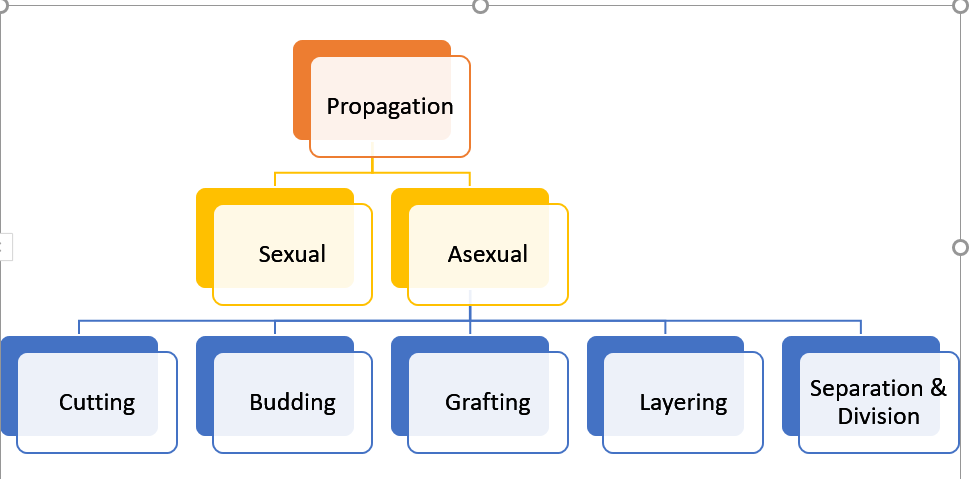
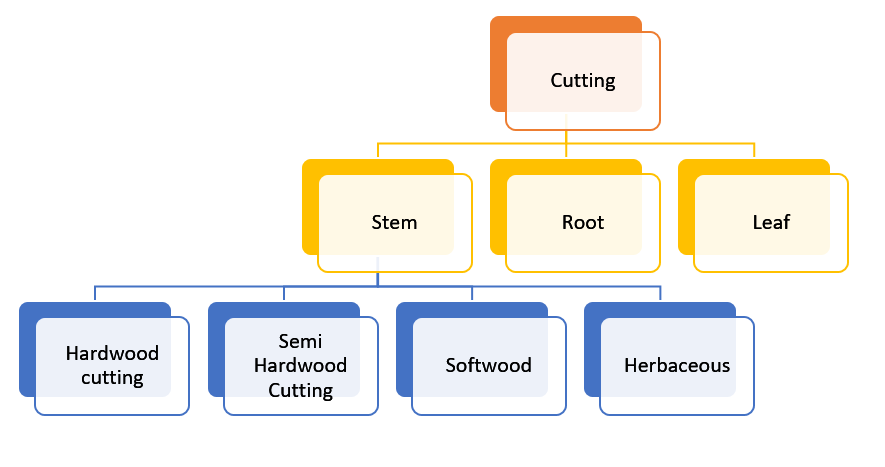

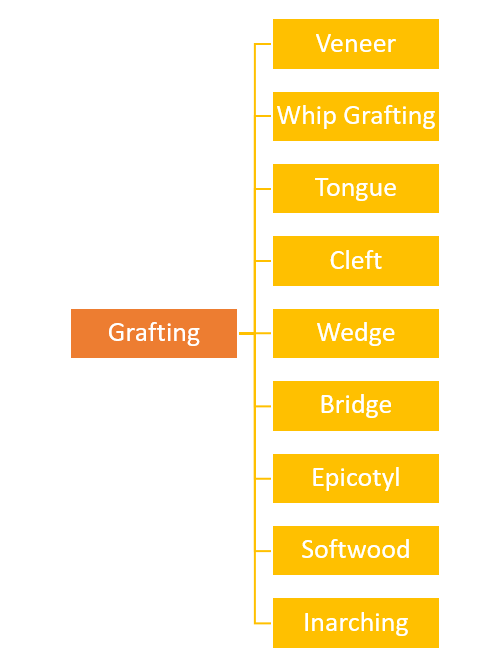
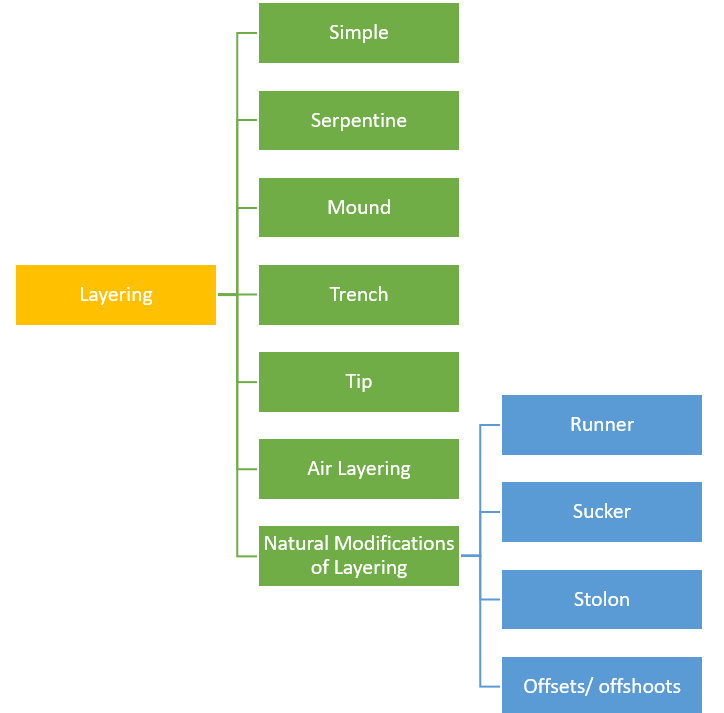
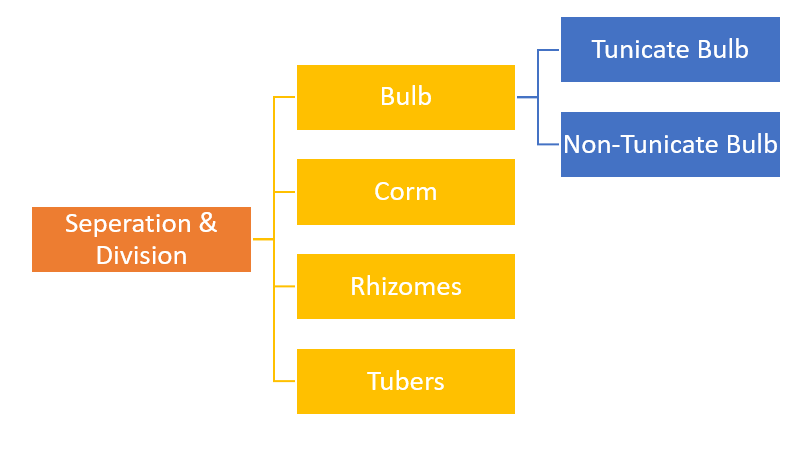
References cited
1.Chadha, K.L. Handbook of Horticulture (2002) ICAR, NewDelhi
2.Jitendra Singh Basic Horticulture (2011) Kalyani Publications, New Delhi
3.K.V.Peter Basics Horticulture (2009) New India Publishing Agency
4. Jitendra Singh Fundamentals of Horticulture, Kalyani Publications, New Delhi
